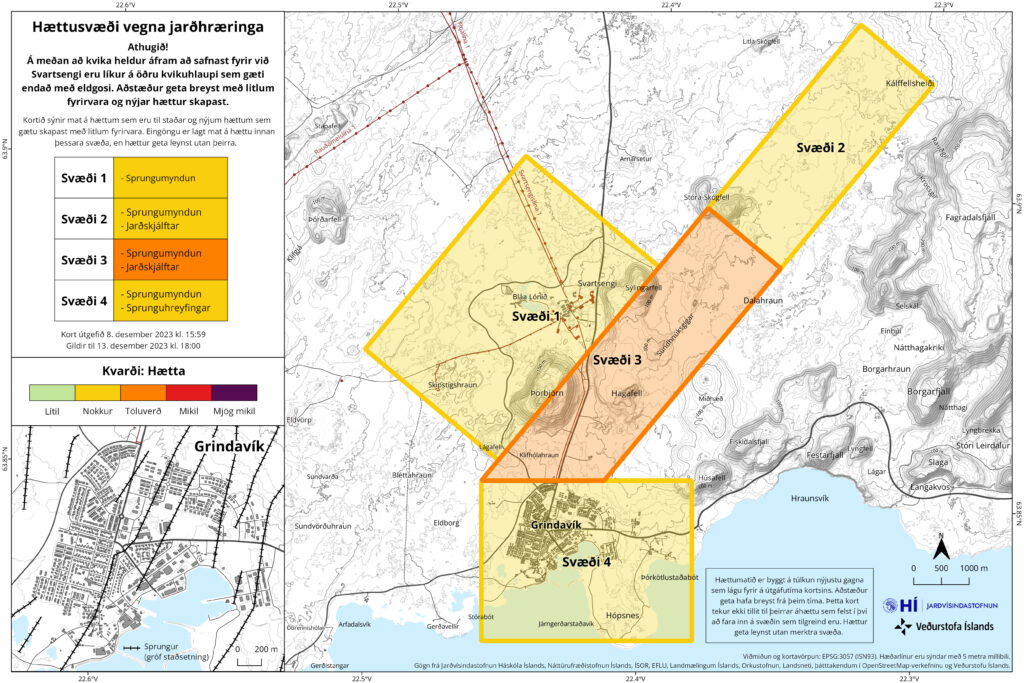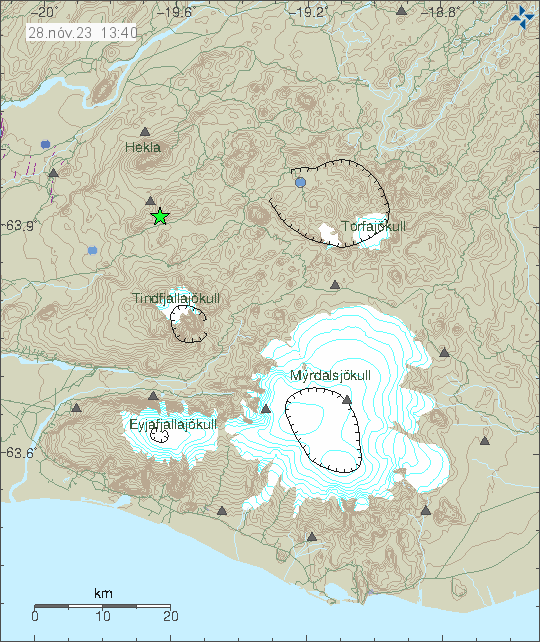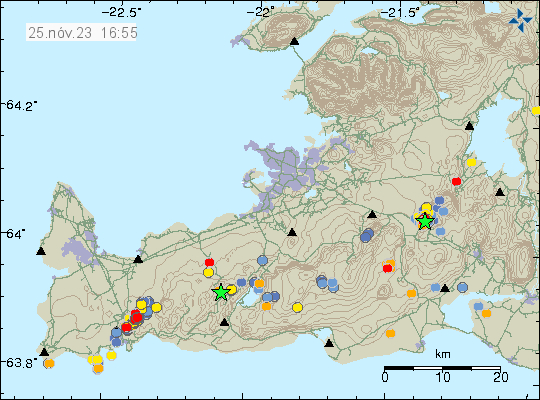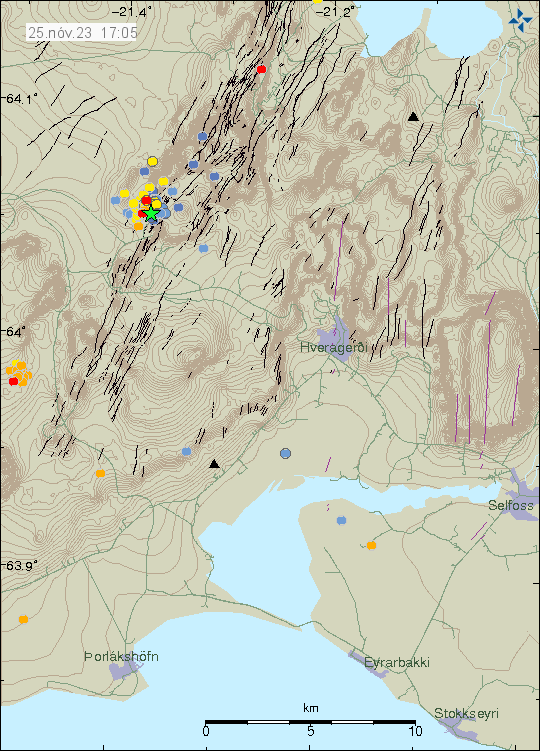This is a short article about the situation in Grindavík. Information here might go outdated quickly without warning.
Sorry for the late update. I was updating my computer and its been more of a problem than I expected. Since I build my own computers, rather than buying already assembled computer.
Overview of the situation in Grindavík
Inflow into the dyke seems to have stopped one to two days ago. This means that it has started to cool down, since no inflow of fresh magma means it starts to form into rock. This is going to take years and in some areas decades cool all the way through. This also means that the rift valley is no longer moving as much as it was doing and in some areas has stopped completely. There is a crust instability in and around Grindavík town because of the rift valley, but this instability is now lower compared to first few days after 10. November. This might continue for years, even after all eruption activity stops few hundred years into the future.
Inflation has now reached almost the same level as 10. November, with only 50mm to go until the same level is reached. This inflation seems to be creating cracks in the ground around Svartsengi power plant. But the news was not clear on exact area of the formation of those cracks in the ground. Svartsengi, Grindavík and the area around the dyke continues to be a danger zone as defined by Icelandic Met Office.

The original image can be found here on Icelandic Met Office website.
This is not over and it is impossible to know when next sequence of events starts in Svartsengi and there is going to be little to no warning when it starts next. Icelandic Met Office has sad that at most there is going to be a two hour warning before an eruption starts, but it might even be shorter time. Making staying in Grindavík and nearby area all hours of the day a dangerous thing to do.
This is the last update until something happens in Grindavík.






